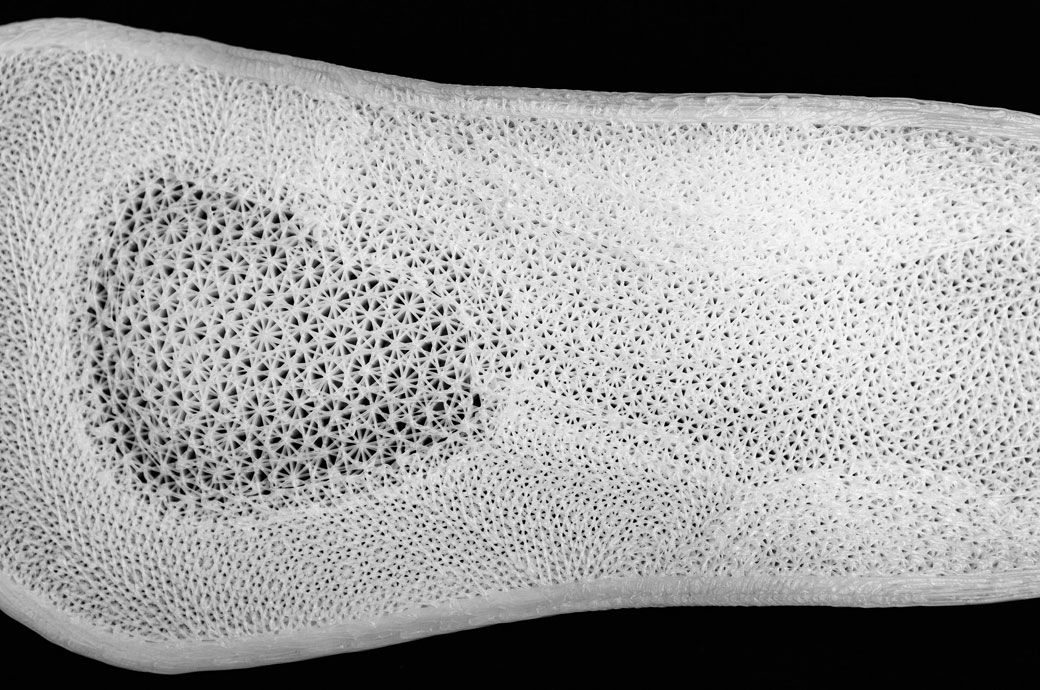
The production of shoe soles made of TPU filaments enables complete and comprehensive recyclability. Under heavy use, when used in sports shoes, it is also the abrasion resistance that makes the sole durable and comfortable to wear. Even with fluctuating temperatures, the insert retains its desired properties. An excellent matching of the thermoplastic material to the challenges of discontinuous extrusion in 3D printing (FDM) makes it possible to map macrostructures of different densities in a sole, which in turn are - also selectively - tailored to very individual needs. Thus, soft sole areas with lower filling density can relieve and flow smoothly into another area, which rather firmly supports and stabilises the foot with higher filling density, the company said in a press release.
Usually, the Elastollan types of 85 Shore A (soft) and 95 Shore A (hard) are used in orthopaedic insoles to support the entire skeleton, but also in insoles for sports shoes, where a special load cushioning or support is desirable due to increased footwork. The open grid structure of the material also makes the sole breathable. Through the so-called smoothing, by the production of flowing, linear transitions between two hardness areas of the sole, unpleasant hard edges are completely avoided, the width of the transition area is customisable. This fully demonstrates the full application flexibility of Elastollan.
The production of shoe soles made of TPU filaments enables complete and comprehensive recyclability. In contrast to commercially available milled soles made of foam materials, the material can simply be mechanically shredded, re-extruded, and granulated after the use cycle. Used deposits are combined with the production surplus according to type and completely recycled by a recycler. By making the insoles to measure, material is massively saved. Only the final required material is used. As a result, there is almost no surplus in production. A production of the soles with thermoplastic polyurethane based on renewable raw materials is also conceivable in principle.
Fibre2Fashion News Desk (GK)

